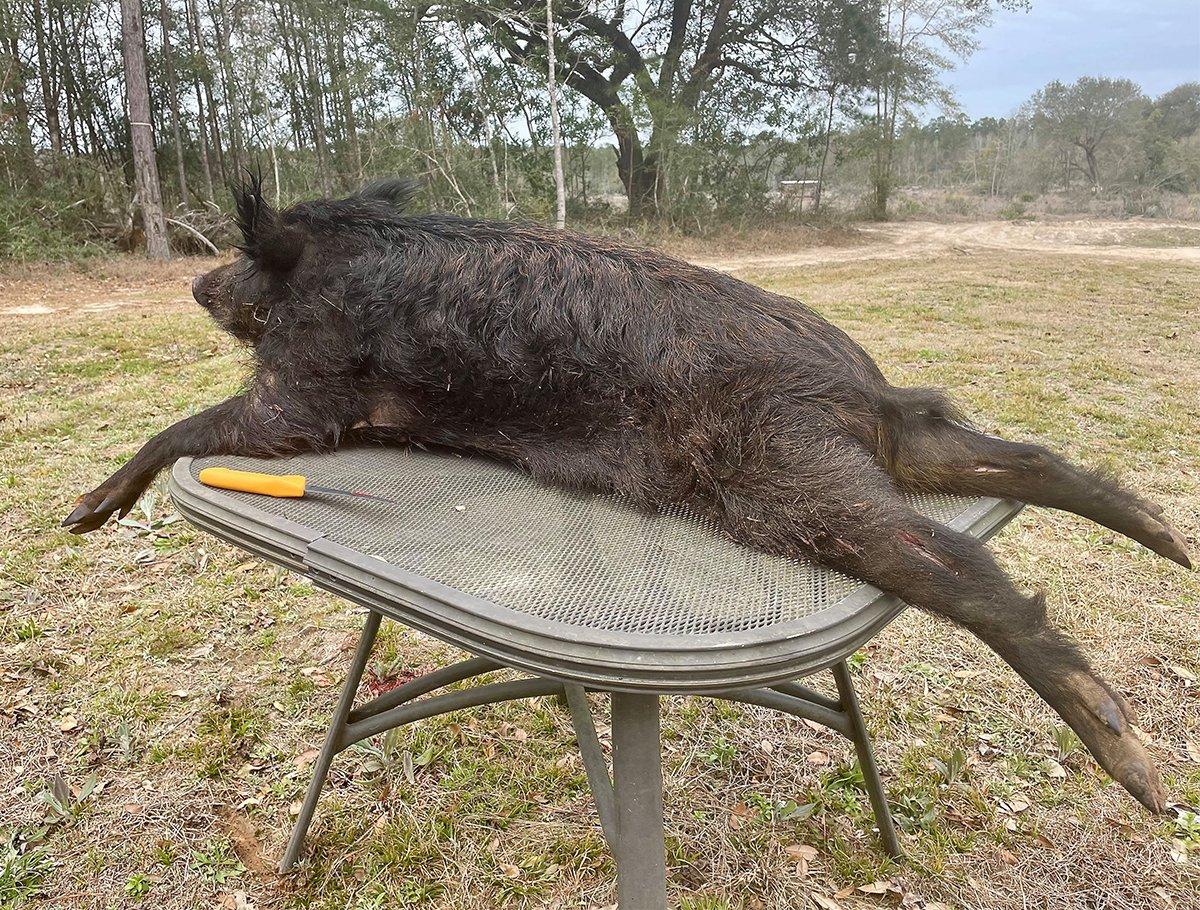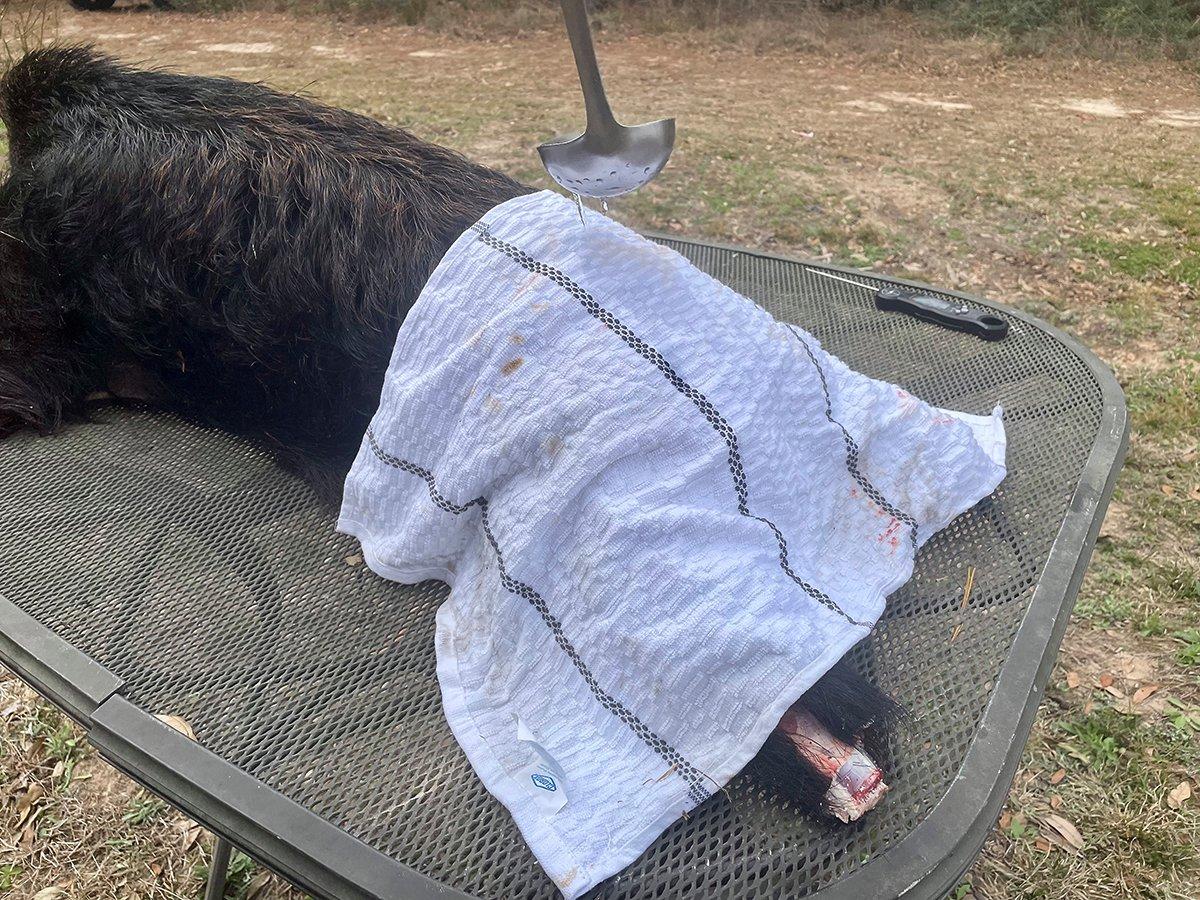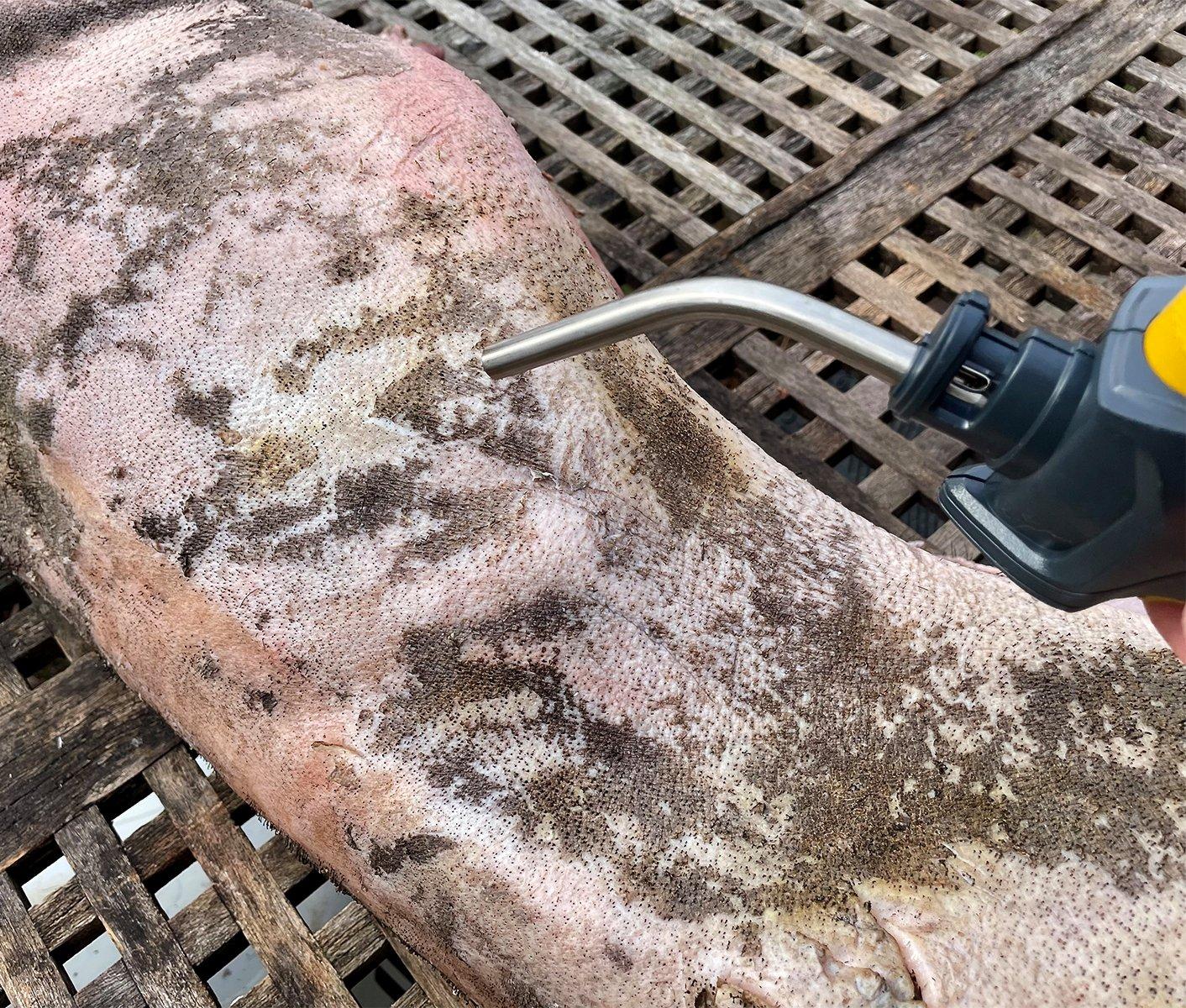A 40- to 80-pound feral pig is ideal for a whole hog roast. Here's how to start the process
Everyone loves a good pig roast. Slow cooked on the smoker or over a bed of coals, roasted pork is tender, delicious, and a great way to feed a crowd. While the thought of transforming a dirty, hairy pig on the ground after a successful hunt into something magical at the dinner table might seem daunting, it really isn't all that hard.
Since wild pigs can carry a number of diseases not often seen in their domesticated kin, it's always a good idea to wear field-dressing gloves while cleaning. Wash tools and hands well with antiseptic soap after the job is completed.
Tools You Need
- Knives
- Cordless reciprocating saw or meat-style handsaw
- Scraping blade
- Large pot and gas burner for water
- Field-dressing gloves
- Propane torch
Step 1: Clean the hog
Wild pigs spend most of their time wallowing around in mud, so finding a thick coat caked on the pig's skin isn't unusual. I like to immediately hose off the skin with a high-pressure water hose or even a pressure washer, if available. A carwash even works in a pinch. If you find yourself in a camp situation without a ready supply of pressurized water, use a bucket of water and a stiff brush to remove as much debris as possible.
Step 2: Field-dress it
Once you have your hog cleaned, you need to field-dress it. Some prefer to scald the hog first to remove the hair, but I like to go ahead and get the pig opened up and cooling, especially in warm-weather hunting conditions.
Start the process just like you would on a deer or other game animal. Make a shallow cut the length of the belly, taking care not to poke or cut the stomach or intestines. Reach into the stomach cavity and remove the entrails, lungs, and heart. Use your knife to cut between the hams to expose the pelvic bone. Next, use a saw or an axe to split the pelvic bone, exposing the rectum and bladder. Carefully remove the bladder and rectum, taking care not to get any debris on the meat. Use clean water to rinse the stomach cavity.
Step 3: Remove the head and hocks
You can definitely roast a hog with the head on, but I usually remove it. There isn't a ton of meat on the jowls of a young hog, and scraping the head to remove the hair is generally more work than is worth it for the return. To take off the head, cut down to the spine with a sharp knife, then use the saw to sever the spine at the base of the head. While you have the saw in hand, go ahead and remove all four hocks at the knee joint by slicing down to the bone with a sharp knife, then cutting the bone with the saw.
(Don't Miss:The 10mm Carbine for Hog Hunting)
Step 4: Remove the hair
Wild hogs have a lot of hair, even more than their domestic counterparts. The process of removing the hair is called scalding since it uses hot water to loosen the hair follicles so they can be scraped off.
With domestic hogs, the entire animal is dipped into a large tank or barrel of hot water. The method works for wild pigs as well, but a large enough tank isn't always available. An easier method is to heat your water in a large pot to between 155 and 165 degrees and cover the hog with burlap sacks or old towels. Here's a note born from experience: Don't use your significant other's good towels for this part. They probably won't be salvageable. Find some burlap or purchase some cheap towels.
Ladle the hot water over the cloth, allowing it to soak the hog for several minutes to loosen the hair. Alternatively, a large cooler will often hold a good roasting-size hog, allowing you to pour the water directly over the hog, then close the lid to let the hog sit for a few minutes.
Don't overheat your water. Temperatures above 165 degrees will have the opposite effect on the hair — setting it in place and making it nearly impossible to scrape. Total time in the hot water will vary, but two to five minutes is usually sufficient. Try a small area. If the hair doesn't scrape out easily, give it a few more minutes in the hot water. If the skin cools enough during the scraping process to make hair removal difficult, place it back in the hot water for a few more minutes.
To scrape the hog, use a large knife blade, machete, or dedicated hog scraper. Hold the blade vertical on the skin, moving it with a scraping motion. Take care not to cut into the skin. You want to pull the hair out, not slice it off. Any leftover hair or stubble after the scalding process can be singed off with a torch. Don't worry if the torch discolors the skin a bit, as it will still look and taste great after roasting. A raised table helps make the scraping process easier on your back and shoulders than doing it on the ground.
Step 5 (Alternate): Just skin it
Does the idea of scraping a hog sound less than appealing? You can just skin it and roast it that way. While you won't get the crispy skin, smoking with the skin off can get even more smoke flavor into the finished product.
Skin your hog just like you would a deer. Start by slicing through the skin up the inside of both hind legs, then pull and slice the skin away from the meat as you work down the hog (assuming your hog is hanging by a gambrel with the hind legs up). Leave as much fat on the surface of the pig as possible.
Step 6: Cool the hog
Once you have the pig cleaned and dehaired, store it in a cooler covered with ice until you are ready to roast. If you need to leave the pig on ice for more than a day or so, make sure to pull the plug from the cooler and tilt it by raising the end opposite the drain plug so that any melted ice water can drain.
(Read Next: Part 2: Roasting and Serving a Whole Wild Hog)












